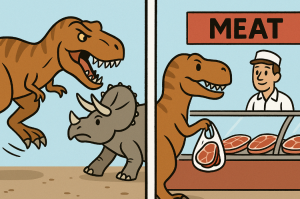
Exploring the Evolutionary ‘Big Bang’ of Snakes: A Deep Dive into Their Astonishing Diversity
Jon note: Do not read if you are as skeptical of snakes as I am.
The world of snakes is as enigmatic as it is diverse. Over millions of years, these legless reptiles have proliferated worldwide, exhibiting a bewildering array of forms and behaviors. Recently, an evolutionary ‘Big Bang’ was proposed to explain why snakes come in so many strange varieties. This fascinating leap in evolution occurred roughly 128 million years ago, allowing snakes to explode in diversity and evolve up to three times faster than their closest reptilian relatives, the lizards (Scientific American).
The Genesis of Snake Diversity
The dynamic period during which snakes first radiated saw the birth of new ecological niches following the extinction of non-avian dinosaurs. This era of ecological opportunity allowed snakes to exploit various habitats and diets, thereby accelerating their evolutionary pathways.
A study on trophic niche evolution in snakes suggests their ability to adapt to a wide range of prey types was crucial to this diversification. As they diversified, snakes maintained remarkable consistency in their dietary niche breadths even while exploring new dietary ecospace.
Genetic and Venom Diversity
Advanced genomic and omics technologies have revealed the genetic underpinnings that significantly contribute to this diversity. The expression of venom gene homologs in diverse snake tissues reveals that adaptive radiation in snakes also led to complexity in venom types, each adapted to specific prey and ecological roles.
These insights demonstrate that as snakes explored new ecological roles, their venom evolved to become highly specialized, enhancing their survival and reproductive success.
Implications of Snake Diversity
The evidence gathered from these studies has broad implications. By understanding the evolutionary history and adaptability of snakes, researchers can gain insights into fundamental biological processes such as adaptation, natural selection, and biodiversity.
The ramifications extend beyond pure science, as these insights improve conservation strategies. Recognizing the diet-toxicity link in snakes highlights the importance of preserving biodiversity at both the prey and predator levels to maintain ecological balance.
Challenges and Future Directions
Despite these advances, challenges remain. The intricate link between diet and venom diversity requires further exploration to fully comprehend how evolutionary pressures shaped current species distributions and adaptations. Continuous advancements in genomic technologies will likely provide deeper insights, refining our understanding of this evolutionary marvel.
Conclusion
As we stand on the cusp of new discoveries, the evolutionary journey of snakes remains a testament to the power of natural selection and adaptation. Their story is one of resilience and ingenuity, offering lessons that underscore the value of biodiversity and the intricate web of life that sustains it.
For those intrigued by the mysteries of evolution, the tale of snake diversification is a compelling chapter in the annals of life on Earth, eagerly awaiting further exploration and understanding.



